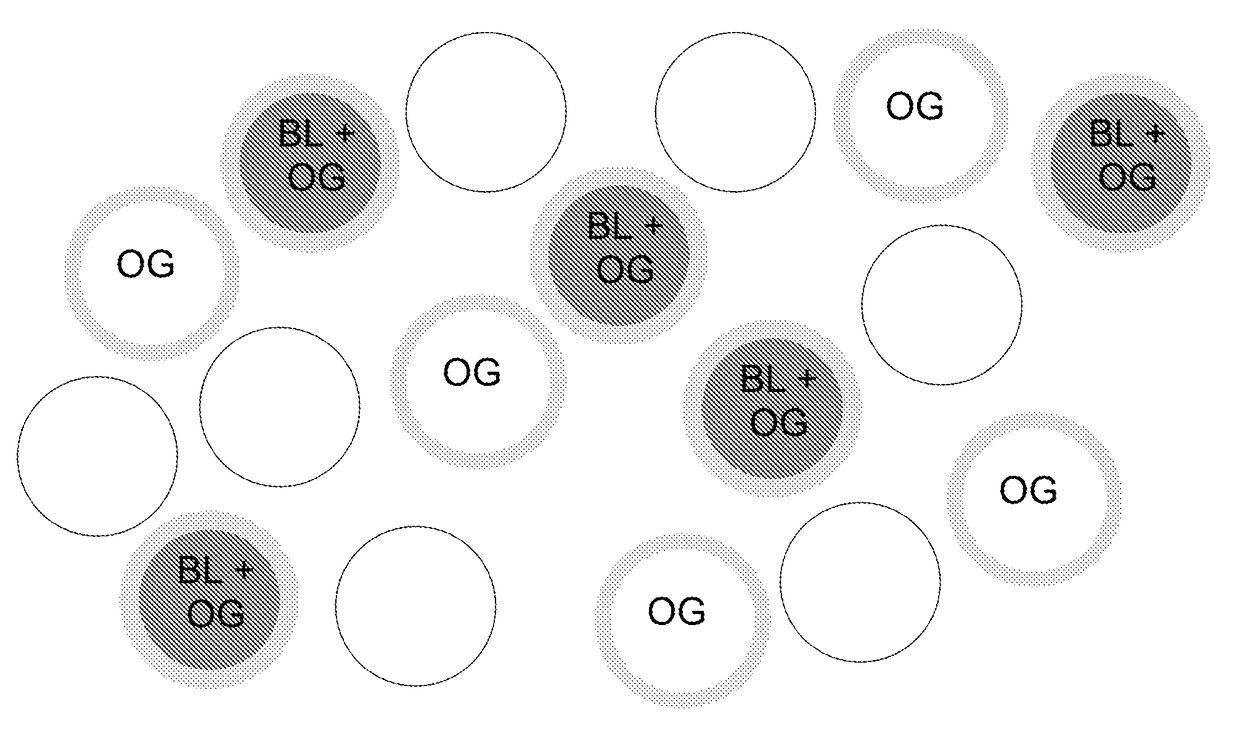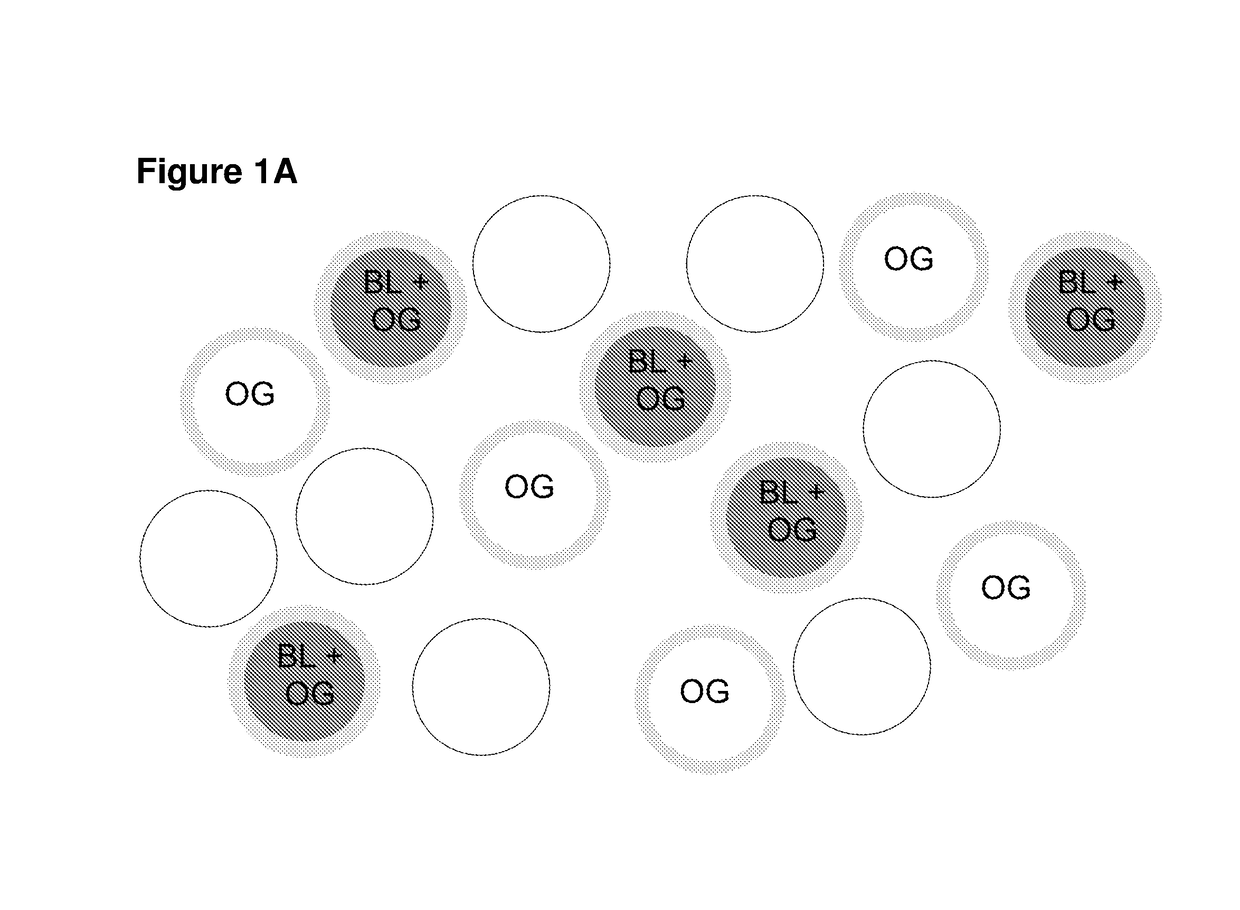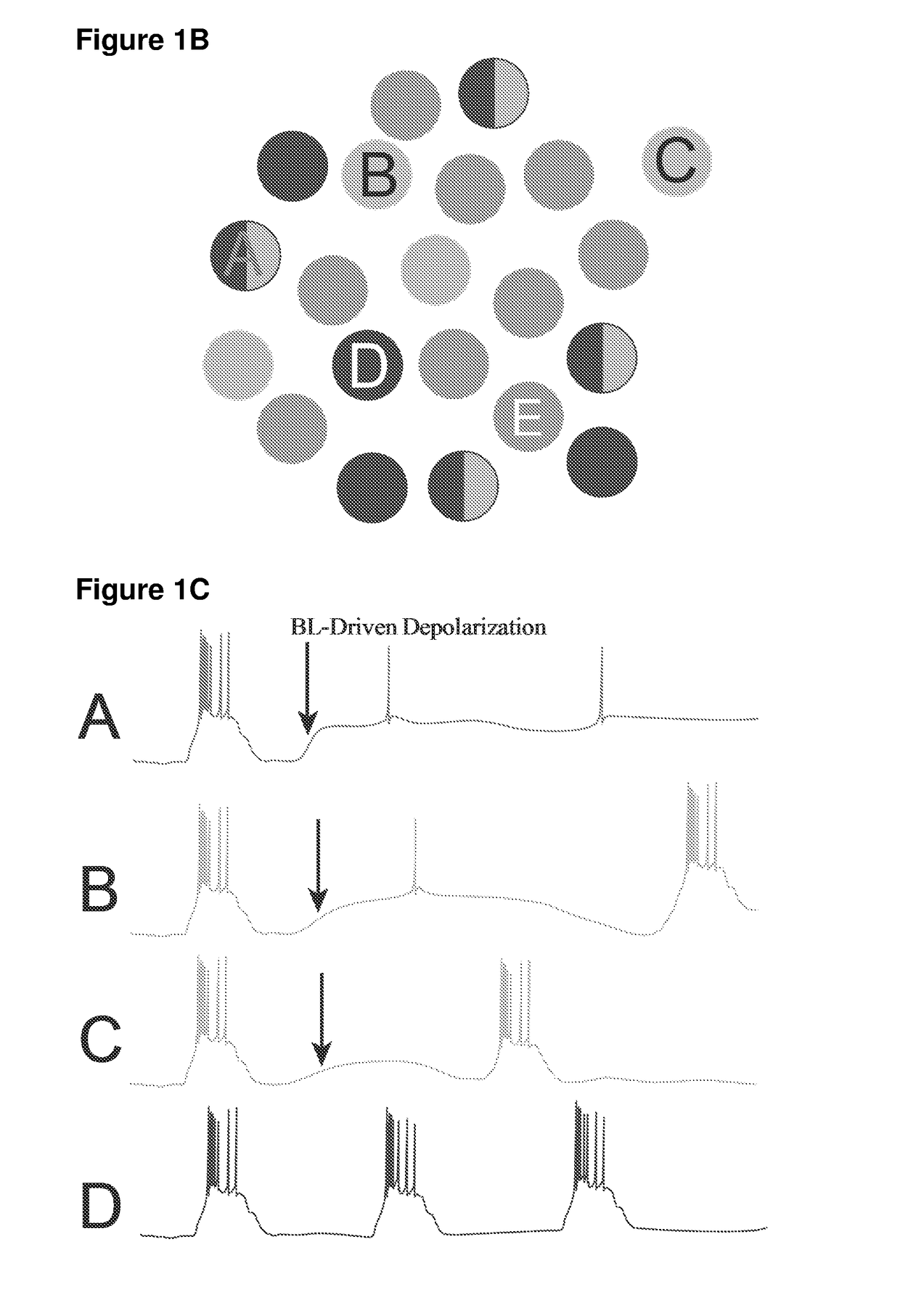Minimally-invasive and activity-dependent control of excitable cells
a technology of excitable cells and activity-dependent control, which is applied in the direction of therapy, animal/human proteins, viruses/bacteriophages, etc., can solve the problems of requiring light delivery and rendering such approaches invasive, and achieve the effect of reducing the extent of or palliation and reducing the time course of symptoms
- Summary
- Abstract
- Description
- Claims
- Application Information
AI Technical Summary
Benefits of technology
Problems solved by technology
Method used
Image
Examples
example 1
Expression of a Luminescent Protein
[0173]This example demonstrates a targeted expression of Gaussia luciferase (GLuc) in mouse brain. Several weeks later, coelenterazine was administered intravenously to the mouse, and an image of the mouse's head was taken with IVIS® imaging system (FIG. 2). As shown in FIG. 2, GLuc was expressed in neocortical cells of right hemisphere only.
example 2
rization and Depolarization of Neocortical Neurons
[0174]This examples demonstrates modulation of neocortical neurons in vitro by contacting the neurons with CTZ. The neurons were modified to express fusion proteins including a luminescent protein (enhanced Gaussia luciferase (eGLuc)) and either VChR1 or Mac. Successful expression of the full construct in the neocortical neurons was confirmed by observation of the fluorescence of the reporter protein (upper middle panel titled Fluorescence in FIG. 3). Ability of eGLuc to luminesce was unaffected by the inclusion of light-gated ion channel (VChR1 or Mac), as shown in the upper right panel titled Luminescence in FIG. 3). FIG. 3A (depolarization) shows an increase in spontaneous action potential firing upon contacting CTZ with a cell expressing a fusion protein containing eGLuc-VChR1. FIG. 3B (hyperpolarization) shows a suppression of spontaneous action potential firing upon contacting CTZ with a cell expressing a fusion protein contain...
example 3
g Excitable Cell Activity by Expressing a Luminescent Protein and a Light-Gated Ion Channel in the Same Cell
[0175]The use of persistent activity of luminescent protein / light-gated ion channel can be used for burst regulation. This effect can be shown in either single cells, or in cell networks with luminescent proteins expressed in one set of cells and light-gated ion channels in another set of cells. TRN and VPm neurons can be selectively and independently transduced to express a fusion protein containing eGLuc-VChR1 by using methods known in the art. Neurons in brain slices can be visualized in vitro, where high quality current- and voltage-clamp recordings can be made. In particular, the neurons can be neurons in the somatosensory sector of the thalamus, e.g., VPm nucleus and its glutamatergic, excitatory relay neurons, and the adjacent thalamic reticular nucleus and its GABAergic, inhibitory neurons. As shown in FIG. 4A, relay cells receive sensory inputs from lemniscal axons, a...
PUM
| Property | Measurement | Unit |
|---|---|---|
| voltages | aaaaa | aaaaa |
| voltages | aaaaa | aaaaa |
| voltages | aaaaa | aaaaa |
Abstract
Description
Claims
Application Information
 Login to View More
Login to View More - R&D
- Intellectual Property
- Life Sciences
- Materials
- Tech Scout
- Unparalleled Data Quality
- Higher Quality Content
- 60% Fewer Hallucinations
Browse by: Latest US Patents, China's latest patents, Technical Efficacy Thesaurus, Application Domain, Technology Topic, Popular Technical Reports.
© 2025 PatSnap. All rights reserved.Legal|Privacy policy|Modern Slavery Act Transparency Statement|Sitemap|About US| Contact US: help@patsnap.com



